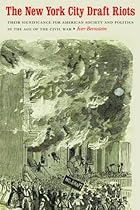

The Civil War tore Maryland in half. Young George Wilson Booth followed the call of the Confederacy and served four years under the banners of the Army of Virginia. During the bright days of the early successes at both Manassas battles and in smaller tussles; from the Peninsula to the Valley; Booth saw history being made. He served with Stonewall Jackson; "Grumble" Jones; Dick Ewell; Jubal Early; and John Imboden. Wounded at Greenland Gap; he arrived late at Gettysburg—probably to his good fortune. Promoted to captain; Booth was in the Valley in the final days and was present at the burning of Chambersburg. An unreconstructed rebel; Booth tells his story simply and straightforwardly; perhaps because he intended this book for friends and family and therefore felt no need to be "literary." The result is a dramatic; powerful; and honest account that takes its place among the best of the Confederate memoirs.
#691945 in Books Bison Books 2010-09-01Original language:EnglishPDF # 1 .77 x 6.06 x 9.10l; 1.17 #File Name: 0803234538392 pages
Review
19 of 20 people found the following review helpful. Race Class In Civil War AmericaBy ChimonshoThis is a fine; insightful study of the New York "Draft" Riots; which were about far more than military conscription. It does have some problems of organization and repetition; as others note. Overly harsh critics probably assume that this is a conventional; event-oriented tale of the riots themselves; but Bernstein's forte is analysis rather than narrative. He explains their context; causes and importance for understanding urban tensions in an era of intense stuggles over freedom; industrialization; work; wages; immigration; assimilation and exclusion. He tells the story well enough (though a coherent chronology is hard to locate); focusing on what it reveals about a period of fundamental change in US history. See also T. Anbinder; "Five Points;" N. Ignatiev; "How the Irish Became White;" and the hoary tome by H. Asbury; "Gangs of New York."10 of 12 people found the following review helpful. A major work on the subjectBy James W. DurneyI did not realize this is a reprint of a 1990 book I read as a hardback. I would not have ordered it if I had. This is not a bad history in terms of accuracy; notes; use of sources; reasons or conclusions. The author drills down into the social; cultural and political issues of New York. He details how these items contribute to the worst riot in our history. This is a very detailed work with a good set of maps to supplement the text.It is one of if not the standard work on the riot. In addition; it is a cure for insomnia. This is a very difficult book to read. For a person interested in labor history and social issues from the 1850s to 1890s this is a great book. If you are looking for information on the draft riot; this is the book but it is a difficult read.5 of 6 people found the following review helpful. A recommendation for any serious college-level American history and social issues collectionBy Midwest Book ReviewThe New York City Draft Riots: Their significance for American Society and Politics in the Age of the Civil War tells the story of the New York City draft riots; following their participants and their underlying importance to the overall social concerns of the times. It's surprising to note that this is the first book to examine the riots in detail; making it a recommendation for any serious college-level American history and social issues collection.